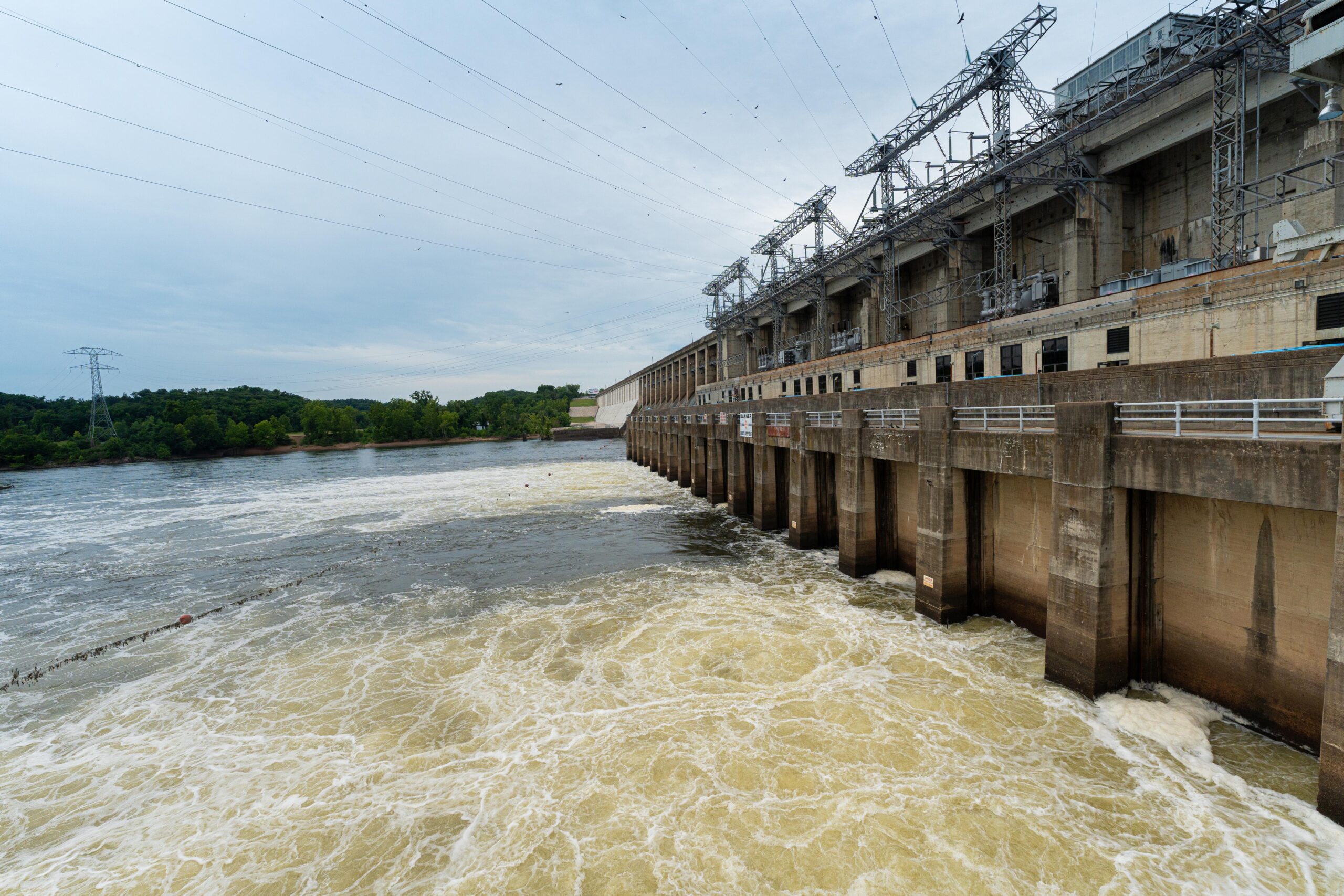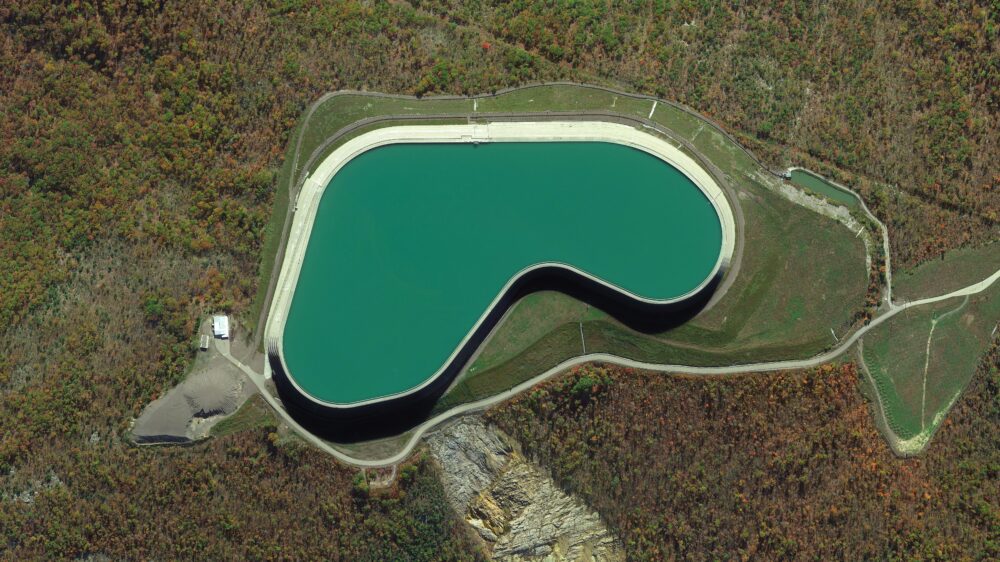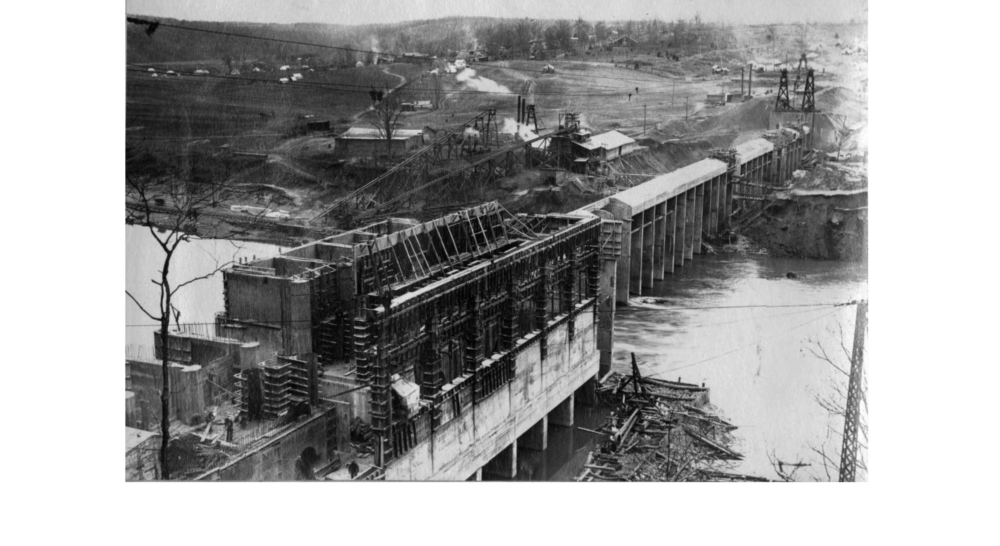Bagnell Dam in Miller County produces enough electricity per year to power 42,000 average households.
Published by
on
For two millennia, humans have employed the power of water to perform work, but it wasn’t until 1882 that the world’s first commercial, direct current hydropower plant — along the Fox River in Appleton, Wisconsin — began generating electricity for a local paper mill.
Missouri is blessed with abundant water resources, but how do its various hydropower facilities cope when impacted by significant drought conditions?
Amped up
Missouri’s oldest conventional hydroelectric power plant, Powersite Dam in Taney County, was completed in 1913 and is still in operation. Today, there are six conventional and three pumped-storage hydroelectric plants in the state. Of those pumped-storage facilities, the only one currently in operation is Taum Sauk Hydroelectric Power Station in Reynolds County.
Conventional hydropower comprises about 2% of the total energy generated in Missouri and about 15% of the state’s renewable energy generation. That might not seem like much, but it represents about 550 megawatts — enough capacity to meet the instant demand of more than 400,000 homes.
DID YOU KNOW?
Conventional hydropower is a renewable form of energy that generates electricity by using the natural energy of a flowing river to spin turbines, usually located within a dam. By comparison, pumped-storage hydropower uses energy generated by other power sources to pump water from a lower reservoir to an upper reservoir, and later releases the water through turbines when power is needed.
A fluid situation
Historically, hydropower generation in Missouri has been mostly unaffected by drought. However, decreased water volume behind a dam leads to reduced head pressure (i.e., the pressure generated by water flowing through a turbine), which can interfere with power output.
“Many water users depend on surface water sources,” said Michael Weller, the surface water section chief with the Missouri Department of Natural Resources’ Water Resources Center. “Low flows due to drought impact the amount of water available for hydropower production, irrigation, livestock, municipal and industrial water supply, recreation and aquatic wildlife.”
Pumped-storage systems are largely immune to drought impacts since the water supplying the energy is transferred back and forth from one dedicated reservoir to the other, though evaporation losses are a concern.
“When a reservoir provides water for multiple types of water use, drought can increase competition for a scarce resource,” Weller said. “Furthermore, downstream users may depend on hydropower releases to meet their own needs. All these uses need to be considered and managed to make certain that impacts are minimized. The Missouri Drought Mitigation and Response Plan helps us understand and react to drought and, most importantly, how to plan for it.”
Consumers have an important part to play in reducing demand on the grid that provides the electric power we depend on — regardless of its source. Simply adjusting our consumption through energy-efficiency projects and smart usage is one of the most effective actions we can take.
Blue-sky thinking
Harnessing the power of water was a milestone in the history of human engineering. It has helped to fundamentally shape our civilization. In addition to electricity generation, dams can provide flood control, irrigation support and drinking water.
Droughts can pose significant challenges to hydropower management. The Department of Natural Resources’ updated Missouri Drought Mitigation and Response Plan directs ongoing work to support the state’s drought resiliency efforts and will help to ensure that we continue to reap the benefits of hydroelectric power.
For more information visit MoDNR’s Drought and Hydroelectric webpages.







